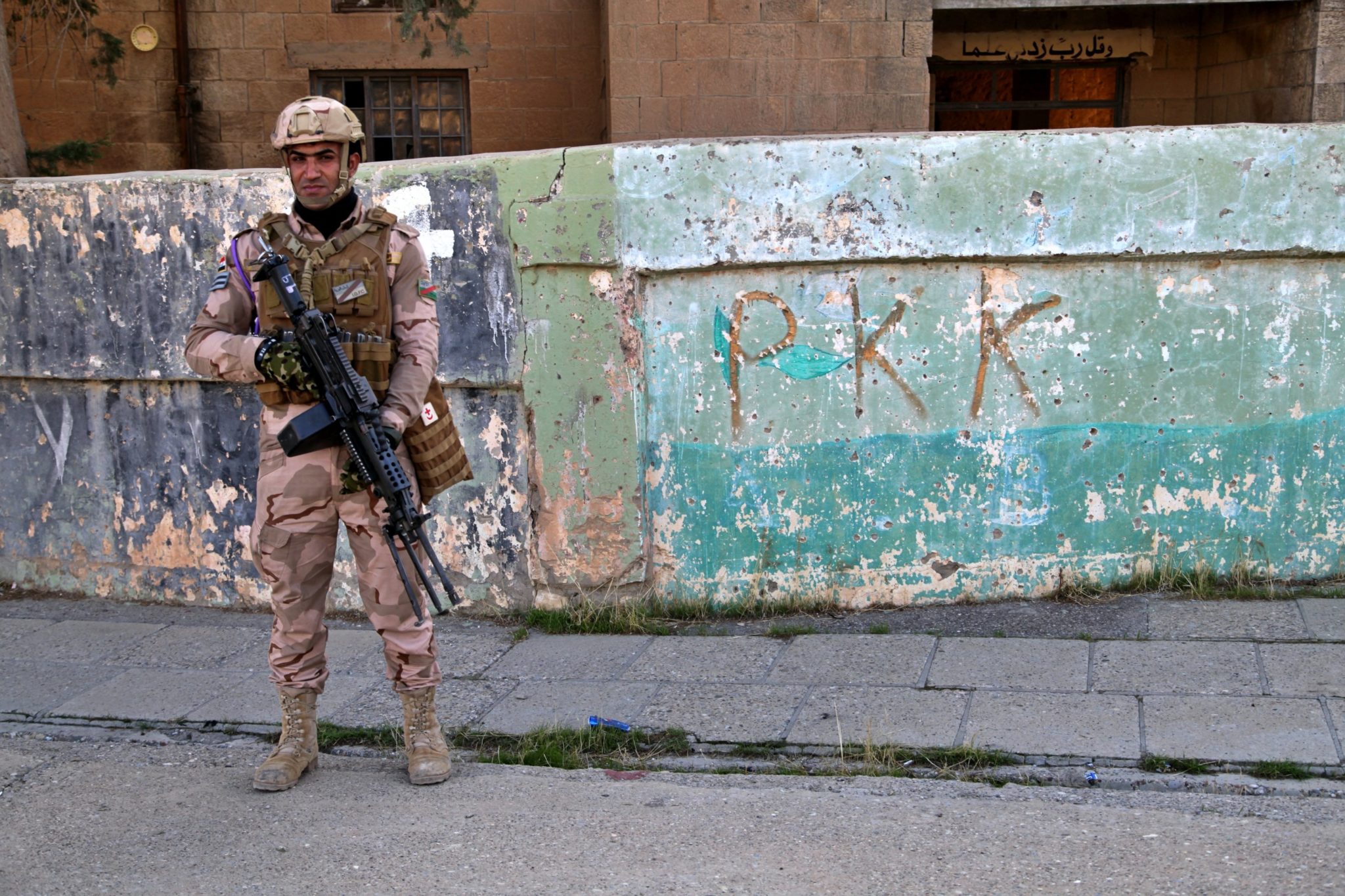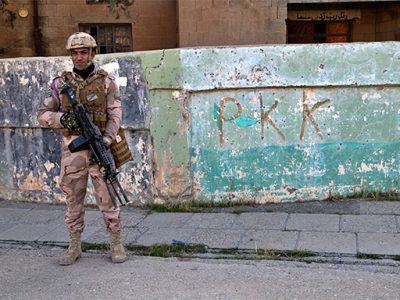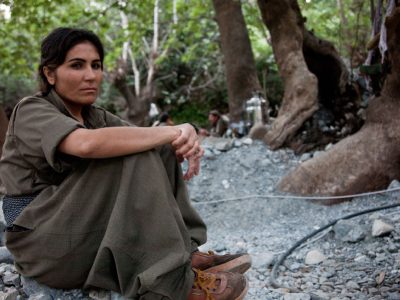Northern Iraq has long been a safe haven for the Kurdistan Workers’ Party (PKK), which is a Kurdish militant group recognized as a terrorist organization by Turkey, the United States, and European Union. The group has been waging an armed struggle in Turkey since 1984. Turkish air and land operations have routinely targeted the PKK in the mountainous region of northern Iraq, near the border with Turkey. The most recent iteration of these operations, titled Operations Claw-Lightning and Claw-Thunderbolt, began in April and is currently ongoing (Pençe-Şimşek ve Pençe-Yıldırım) (Terrorism Monitor, May 7). In mid-May, in addition to these ground operations, Turkey initiated a new campaign of targeted operations that have killed several prominent PKK figures in northern Iraq. This piece aims to analyze Turkey’s recent focus on targeted killings, often referred to as “personality strikes,” in the country’s fight against the PKK and to elaborate on potential future targets.[1}
Turkey’s First ‘Personality Strikes’ in Northern Iraq
On May 17, President Recep Tayyip Erdoğan announced that the “PKK’s general officer responsible person for Syria codenamed Sofi Nurettin was killed in northern Iraq” (Milliyet, May 18). Interior Minister Süleyman Soylu stated that Sofi Nurettin, based in Rojava, worked as the head of the PKK in Syria, as a member of PKK’s Central Committee, and as a member of the People’s Defense Forces’ (HPG) Military Council. Soylu congratulated the Turkish Armed Forces (TAF) and the Turkish Intelligence Agency (MİT) and wished the same fate “for the others [in the PKK] who could not get out of the cave” (TRT Haber, May 18).
This first high-value target, Sofi Nurettin, whose real name was Halef el-Muhammed, was eliminated in a joint TAF-MİT operation. According to Turkish media, the MİT learned of his location in northern Iraq by monitoring his family in Syria (Sabah, May 17). However, no information on how the operation was conducted is currently publicly available. Due to the emphasis on collaboration between TAF and MİT, it can be assumed that the operation was executed by a drone or fighter jet, or both together.
Another targeted killing operation in northern Iraq was conducted on May 24. This time, Turkish aerial assets targeted two cars in the vicinity of Mangesh, a subdistrict of Dohuk Governorate in Iraq, and killed four PKK members, including Selahattin Dede, codenamed Zagros, who was a midlevel militant and was categorized in the grey list of Turkish security forces. This was again declared a joint operation of MİT and TAF. However, this time Turkish media showed video footage of the attack and pictures of the destroyed vehicles (Sabah, May 24).
In two other successive incidents on June 5 and June 10, MİT killed Selman Bozkur (a.k.a. Doctor Hüseyin) and Hasan Adır (a.k.a. Salih), respectively, in the Makhmur region of northern Iraq, which is a town located 40 miles southwest of Erbil. Both figures were reportedly on the Interpol red list (TRT Haber, June 6). Erdoğan announced the attack as “good news for the nation” (Twitter.com/RTErdogan, June 6).
Erdoğan Signals Target Locations: Makhmur and Qandil
Selman Bozkur was illegally trafficking money in Iraq before becoming the head of the Makhmur camp (TRT Haber, June 6). During a televised live interview just a few days before the operation, Erdoğan gave a hint of the impending operation against Bozkur (YouTube, June 2, 2021). He mentioned two PKK safe havens in northern Iraq, including in the Qandil mountains and the Makhmur camp. Qandil mountain, located over 200 miles away from Turkey near the Iraqi-Iranian border, is the central headquarters for the PKK’s top leadership cadres. The bulk of the militant group has been based there for decades.
Makhmur, a 12,000-person refugee camp, has existed in the region since 1998 (Al-Monitor, June 7). [2] According to the Turkish government, the PKK forcefully moved Makhmur’s Kurdish inhabitants from Turkey into northern Iraq in 1992 (TRT Haber, June 6). The Iraqi government and the United Nations recognized Makhmur as an official refugee camp in 2011. In recent years, however, the PKK has increased its influence in the camp, and it has become a recruiting ground for the group.
Erdoğan has argued that, “We also prioritize Makhmur as much as Qandil. This place serves as an incubator for Qandil…the kids, at the age of nine or ten, were trained and then sent to Qandil. If we do not go to them, they will continue to recruit [from Makhmur camp]. We tell the United Nations: If you can do it, come and clear this place, otherwise we will do it. We cannot tolerate it anymore” (YouTube, June 2). Turkish security forces killed two key PKK figures of Makhmur camp successively, Bozkur and Adır, within ten days after Erdoğan’s remarks.
Turkish aerial assets continue to fly and search for PKK members to conduct “signature strikes,” which, until recently, have been the favored method to target the PKK both in Turkey and abroad. A signature strike involves targeting individuals who bear the characteristics of certain militants, as judged from the screen of a drone operator. By assessing the behavioral patterns of individuals on the drone screen, experts can differentiate militants from civilians. A Turkish air attack on May 30 that killed five PKK members in the Gare region of northern Iraq was such an example of this type of signature strike (Sözcü, May 31).
However, the above-mentioned operations against specific militants, as well as Erdoğan’s remarks, indicate a new method for Turkey’s fight against the PKK, which can be defined as “personality strike targeted killing operations” or “killings from the list.” Targeting key PKK militants is deeply connected to precision capabilities, possession of required aerial assets, including mostly armed drones, and the intelligence capacity of the state. Turkey has enjoyed these technological capabilities for several years and has also improved its signal and human intelligence capacity as well as its intelligence agency’s operational capability to conduct personality strike targeted killings in northern Iraq.
In a live interview, Erdoğan also discussed Qandil and Makhmur: “There are two sides of Qandil, one is on Iran’s side and the other is on Iraq’s side…We told our brothers in Iraq that if you are going to do it then do it, otherwise we will do it and we will come and strike. There is no other solution to this. In countering terrorism, Turkey is not awaiting [on] other countries anymore. Turkey searches, finds, and eliminates and this is a new reality…Turkey is determined to dry this Qandil swamp until it will not spread any terror microbe ever again. To achieve this, we will do whatever is needed under the law by respecting the sovereignty of our neighbors” (YouTube, June 2).
Therefore, it could have been expected that the upcoming targeted attacks, in addition to Makhmur, would be in Qandil. However, Qandil’s long distance from the Turkish border made a ground attack option almost impossible. Moreover, such an operation would be economically costly. Turkish jets had bombed Qandil several times before, but they were not effective due to a lack of real-time information on the area’s cave infrastructure. If fighter jets were again used for individual targeted killings, they would need drone assistance to pinpoint targets for their laser or GPS-guided ammunition to achieve the intended outcomes of such an operation.
Recent Drone Upgrades and Prospects for Future High-Value Targets
The range of current operational TB2 Bayraktar drones is limited by “the line of sight,” referring to the antenna communication range between a drone and its ground terminal that extends approximately 185 miles. This is the main limitation of this weapon system. However, by the end of 2020, the technical manager of the Baykar Defense Company, which is the main producer of TB2s, Selçuk Bayraktar, shared the test flight of a new version of TB2, which was integrated with a satellite communication (SATCOM) system (SavunmaSanayiST.com, November 10, 2020). This capacity would allow TB2s to be used beyond the line of sight. In an online event on the May 28, Haluk Bayraktar, Selçuk’s elder brother and the chief executive of the Baykar Defense company, announced for the first time that the new SATCOM integration TB2s could operate beyond the line of sight with a range of approximately 1,100 miles (Twitter.com/haluk, May 28).
According to Turkish defense analyst Hakan Kılıç, the SATCOM capability will allow the TB2 to fly over regions covered by the Turkish satellite TURKSAT 4B. Therefore, TB2, with its 24 hours of flight time, could fly to places that require ten hours or more and still be able to return to Turkey. It is also known that the TAF has been using satellite-operated drones named ANKA for several years now. Hakan Kılıç also stated that the satellite-operated ANKA-S, the armed version of the drone, has already proven itself in Syria (TRT Haber, November 11, 2020).
On February 24, Temel Kotil, general manager of TUSAŞ, which is the company that produces the ANKA, announced that the company had already delivered 27 drones to the TAF (Defenceturk.net, February 24) Therefore, the increased inventory number of ANKA drones and the recent improvements in TB2s could allow the TAF to conduct signature strikes in the vicinity of Qandil mountain. However, personality strikes require both signals intelligence and human intelligence capability, which would not be easy to acquire given the long-distance to Qandil from Turkey and the limited capacity of the Turkish intelligence assets in this region.
Intelligence Needed for Personality Strikes in Qandil: Turkey’s own Assets or ‘Allied’ Support?
The Turkish intelligence community will face a real test in the coming years. If it can develop the capacity to designate the exact location of PKK leaders in Qandil without any help from its allies, such as the United States or other NATO countries, Turkey can enter a new phase in its efforts to contain that organization. Any success also could provide immense political advantage to the Erdoğan government, which has been losing popularity due to worsening economic conditions, recently uncovered government-mafia connections, and alleged corruption scandals.
However, if the MİT or other intelligence bodies cannot gather adequate, reliable intelligence for personality strikes, the government may turn to allies, especially the United States, for whom it would not be particularly difficult to designate the real-time location of high-caliber PKK leaders. Yet, at this time, under the current state of strained relations between the two countries, the U.S. might not volunteer support to Turkey. Such cooperation had taken place in 1999 when Turkish intelligence captured PKK leader Abdullah Ocalan in Kenya with U.S. assistance. However, if US policymakers offer intelligence support to Turkey to target PKK leaders, it could reduce the negative perception of the U.S. among the Turkish population. Anti-Americanism has grown in Turkey in recent years due to accusations that Washington supported the July 15, 2016 coup attempt in Turkey, the harboring of the Gülen movement leader—who has been accused of leading the coup attempt—and ongoing cooperation with the Democratic Union Party (PYD), which is the PKK’s affiliate in Syria. Regardless, the PKK leadership’s days in Qandil are numbered. [3]
Notes
[۱] Jack McDonald, Enemies Known and Unknown: Targeted Killings in America’s Transnational War Oxford University Press, 2017, p.11
[۲] Makhmur is both a UN-recognized camp and a PKK hideout. It is the residence of villagers who fled Turkey. Turkey says the PKK forcefully moved them to gain international attention for its cause, while the PKK states that the inhabitants are local Kurdish villagers escaping from the pressure of the Turkish security forces. Others suggest it is not easy for the villagers to deal with both the Turkish security forces and PKK at the same time. Thus, villagers preferred to leave their homes and hoped they would be taken care of by the UN. One cannot say all of the inhabitants are PKK members, but PKK has been a powerful force at the camp.
[۳] Turkey and PKK peace negotiations have taken place in the past. The most recent such negotiation, which took place between 2013 and 2015, failed.














